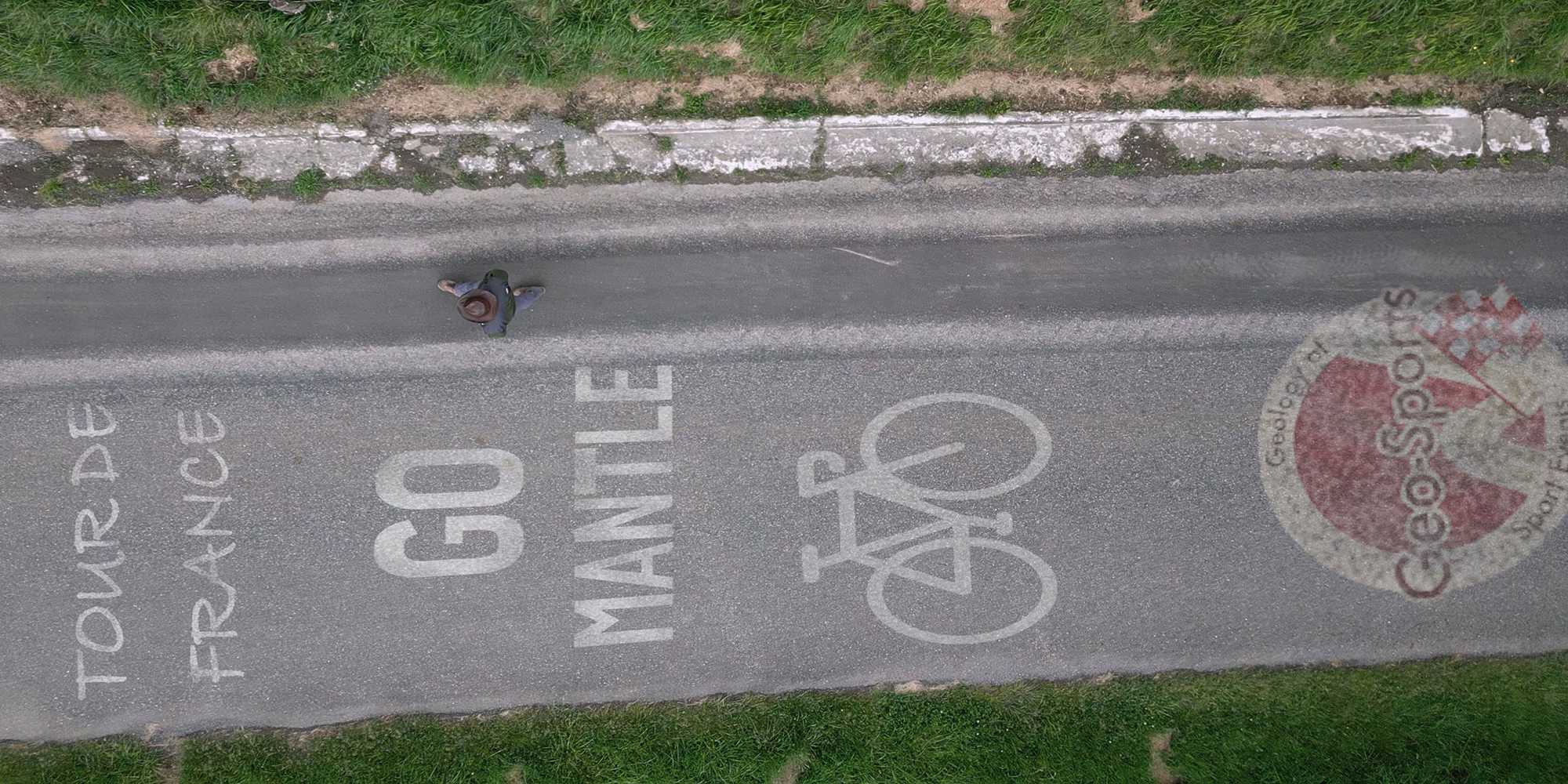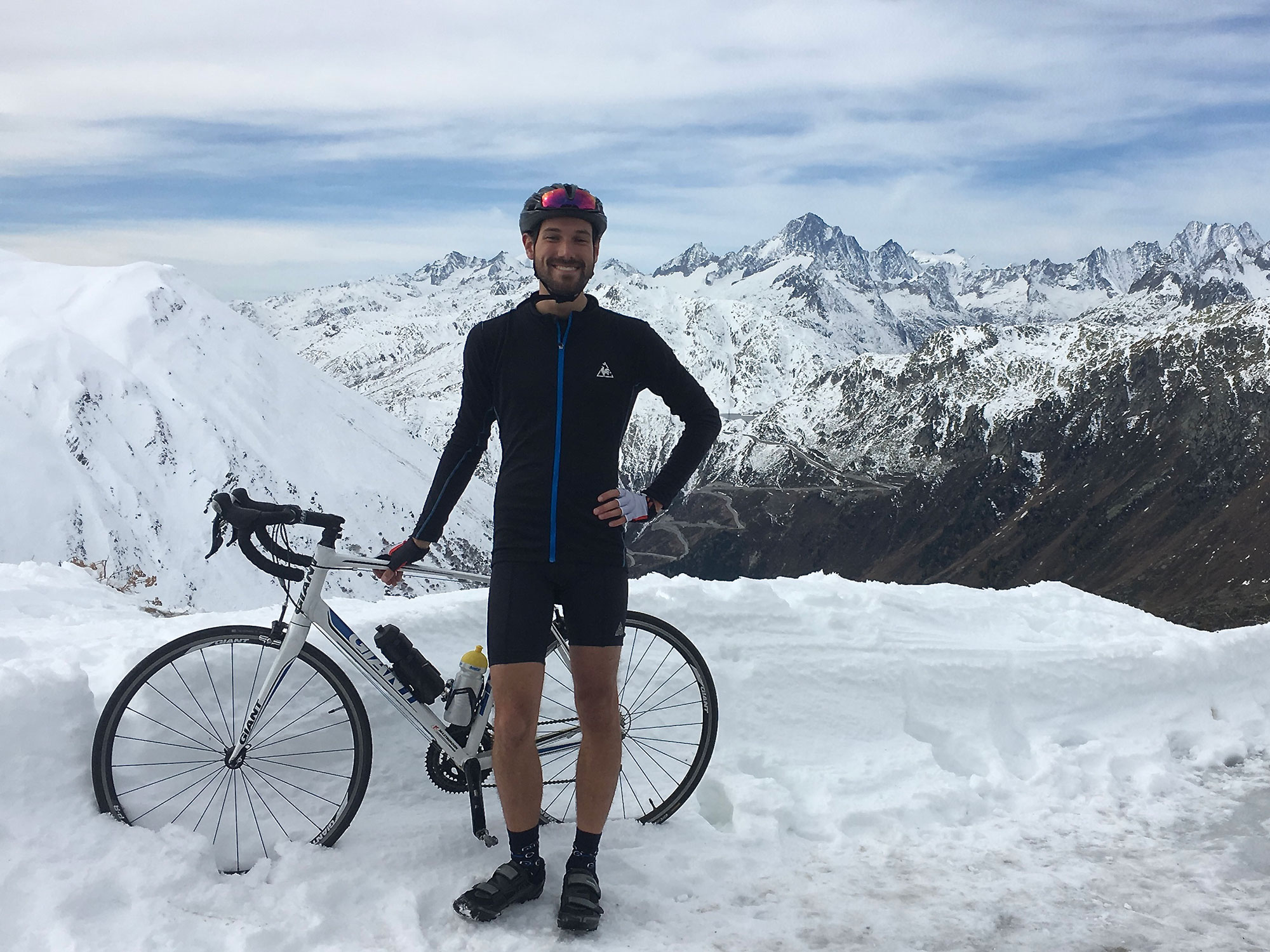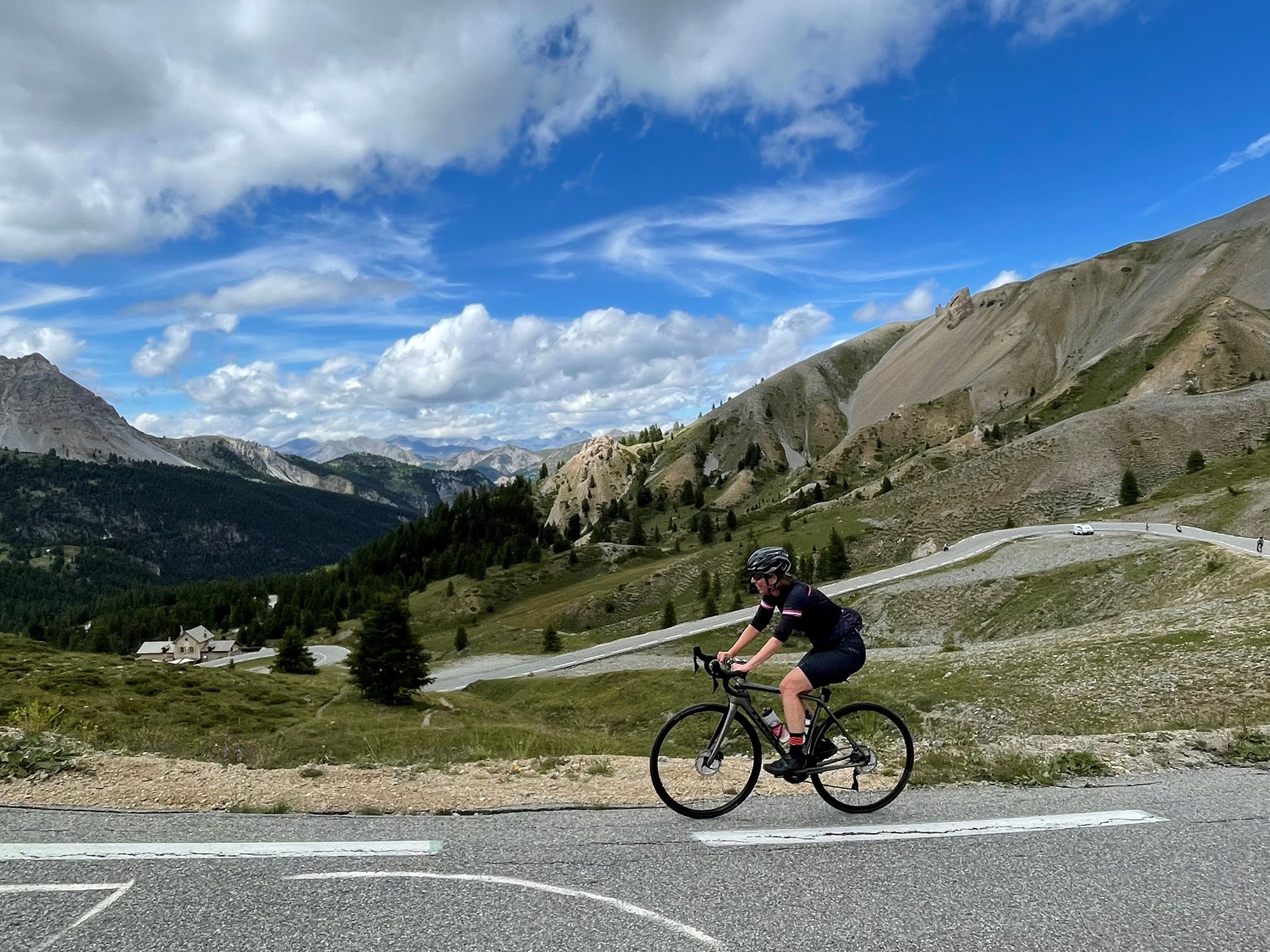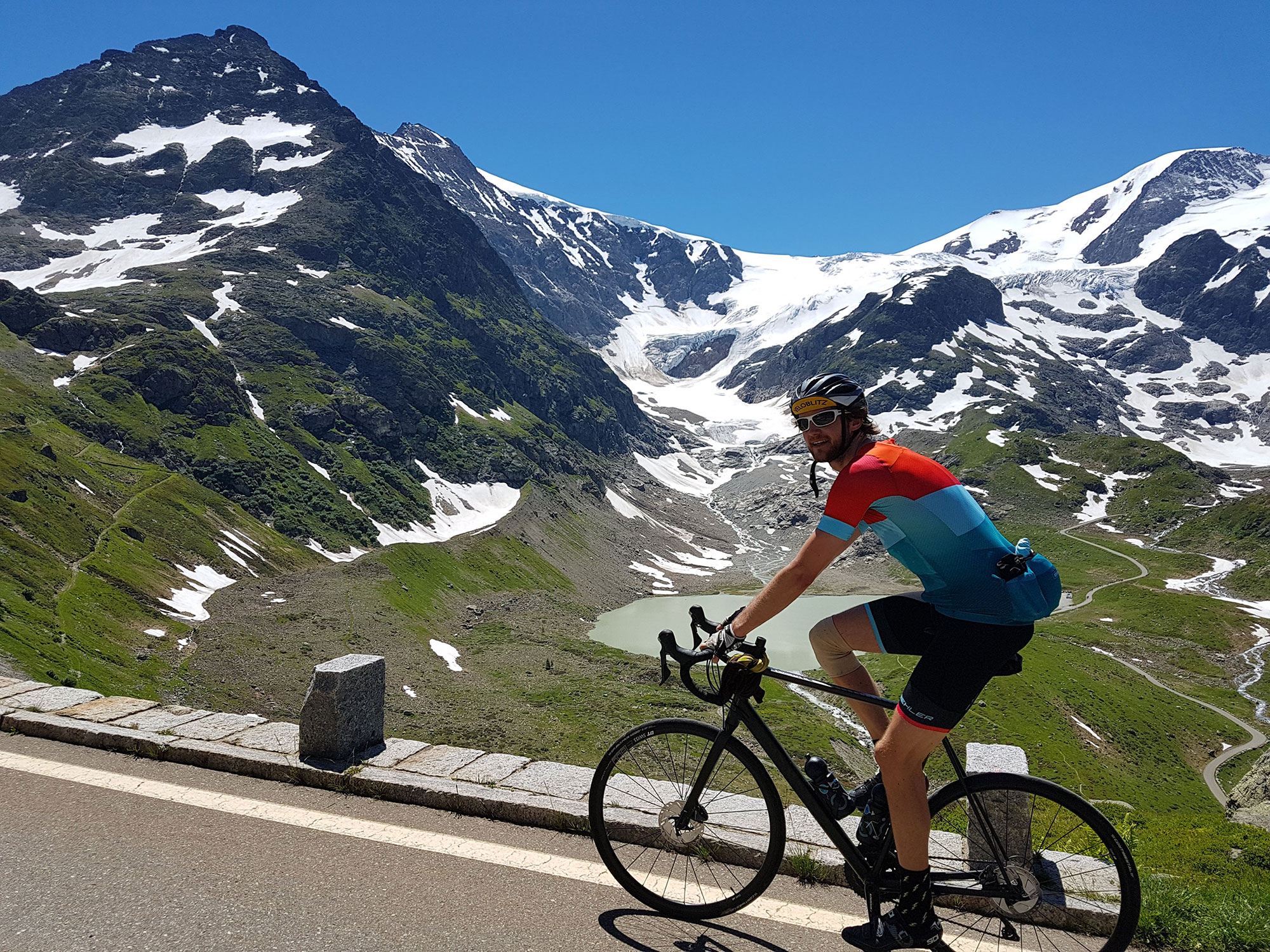Geology of the Tour de France: Earth science meets cycling
The Grand Départ is scheduled for 1 July, but the preparations for this year's Tour de France and the Tour de France Femmes started more than 400 million years ago, when the rocks of the Central Massif and the Vosges Mountains were formed.

Behind every climb, descent, or flat stage is a geological reason, and the team behind Geo-Sports.org explains the geology that created the race parcours. In addition to their usual blogs, this year the team will also use short videos recorded on location. The site Geo-Sports.org will describe the natural decor of each stage of the Tour de France: the various landscapes and the treasures that are found below the surface, for both the men’s and the women’s races. During this year's Tour de France Femmes, the team will pay special attention to female pioneers in the development of Earth science.
Geologist Douwe van Hinsbergen is Professor at Utrecht University and die-hard cycling fan. In 2021 he decided to share his knowledge and the underlying geological treasures with the public in a fun and accessible way. Since last year his fellow earth scientists from the Netherlands and abroad have joined him in his quest.

“Much more than in other sports, a cycling race is an event where you can enjoy the surroundings.”Douwe van Hinsbergen, Professor of Global Tectonics and Paleogeography at Utrecht University
Geo-Sports.org scientists include Thomas Schouten, doctoral student in the Structural Geology and Tectonics group from the Department of Earth Sciences at ETH Zurich and ERDW-ETH Alumni Martine Vernooij and Jochem Braakhekke.
Rocks, fossils, and volcanoes, but also paper, ceramics, and lithium
This year, the Tour de France will once again race through the varied landscapes of France, and northern Spain. To name just a few: the Swiss cheese of the Basque Country hills, a volcano that was once Europe’s largest in the Auvergne, rocks folded like a pile of clean laundry in the Alps, and a series of dinosaur tracks in the Jura. The study of these rocks, fossils and volcanoes is not just some nerdy hobby - our scientists from the Department of Earth Sciences will be reporting on the geological background and context of the following stages of the race:
- Stage 4 starts in the spa town of Dax. Although largely invisible, the origin of the famous thermal waters of Dax links to invisible, underground mountains of salty clay. In his blog Jochem will explain the what and how of these so-called salt diapirs.
- On stage 11, the peloton passes the quarry of Beauvoir, where the mineral kaolinite is mined for the manufacturing of paper and ceramics. Thomas will explain the geological origin of this mineral, and why this same geology also resulted in an important deposit of the highly sought-after metal Lithium.
- Martine will write about stage 1 of the “Tour de France Femmes”, which starts in Clermont Ferrand, known for its huge cathedral and the nearby Chaine des Puys, a chain of 80 volcanoes. The cathedral, Notre Dame de l'Assomption, is constructed using local rocks that can be traced back to one of the nearby volcanoes, the Puy de la Nugère, which is an extinct stratovolcano that erupted around 10,000 years ago.
If you are curious how these phenomena were created, how you can recognise them, and how they affect our lives today, then take a look at external pageGeo-Sports.org and the linked external pagesocial media channels.
Blogs and videos
With cycling commentator José Been as Editor-in-Chief, the team behind Geo-Sports.org has now expanded last year’s pilot project with more blogs, more information, and videos with explanations, which are all free to use by the media. Utrecht University geologist Marjolein Naudé will host three videos for the Tour de France Femmes, and her colleague Douwe van Hinsbergen will do the same for the men’s Tour, for a total of nine videos. They will also co-host one video together. The videos will be used by television broadcasters during their live stage reports and at the end of the relevant stage, they will be posted to YouTube and the Geo-Sports.org social media channels.
Send pictures
“The audience can also share photos and ask questions on Twitter and Instagram via the hashtag #GeoTdF”, adds Van Hinsbergen. “And during the Tour, we’ll provide daily commentary via our Twitter account external page@geotdf.” Fans can also follow Geo-Sports via other external pagesocial media channels.
12 countries, 4 continents
Geo-Sports.org is an initiative by Utrecht University and the Naturalis Biodiversity Center, both in the Netherlands. Thirty researchers from 25 different institutes in 12 countries on 4 continents participated in the project.
The website is in English, French, German, Dutch, Spanish, Italian, and several other languages.
The Geo-Sports.org scientists from the Department of Earth Sciences

I study plate tectonics, particularly the so-called subduction zones, where one plate dives beneath another one. I use computer models that simulate how rocks deform at the boundary between these two plates, and how this determines the speed at which they move. In my spare time you can find me in the Alps: if there is enough snow I bring my skis, but otherwise I take my bike!

I am a structural geologist working as a science coordinator in the Office of Research of ETH Zurich. I like to cross disciplinary boundaries and during my research career, I have also worked in the fields of materials science, aerosol science and cultural heritage.

Cycling geologist/glaciologist, always on the lookout for traces of former landscapes and long-gone glaciers. Founder of external pageRecogn.ice, a non-profit organisation to spark positive awareness of the glaciers that do still exist. Also, looking for a new job as geospatial analyst, because Earth observation is key.
